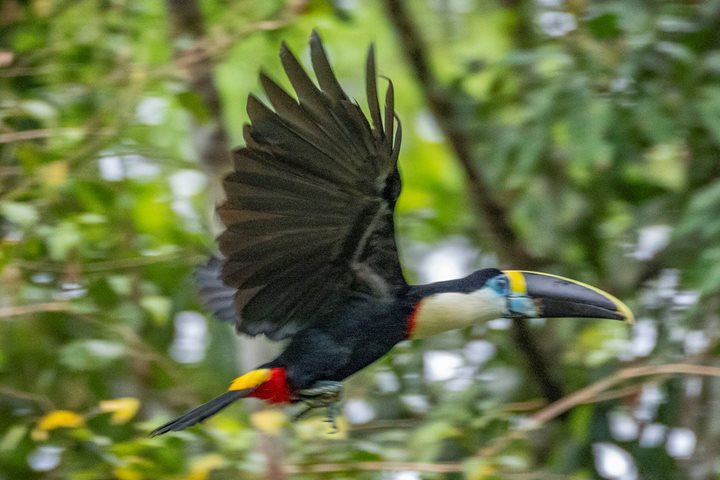Blue and yellow macaws make all the other birds we have seen this week look drab by comparison. Not that the others are drab, not at all. But this morning at sunrise we were treated to gorgeous views of six of these flashy members of the parrot family in trees right beside the river. The early morning lighting highlighted the blue and yellow of their feathers as they sat, pairs preening themselves and each other. Then they moved to a dead palm tree to investigate a cavity. It was remarkable to get to watch them so close for so long. They are monogamous and even though this is not their nesting season, they travel together.
After breakfast we went off to explore the flood forest or varzea. This is the dry season, so the water level is dropping. The rivers are low now, and the water will continue to get lower for the next month. Eventually the weather will shift slightly and the water will go the other way, flooding 80% of the forest of the Pacaya-Samiria Reserve that we are visiting. As we hiked along this morning we got to see the watermarks on the trees. Most of them were over our heads. It is amazing to think of the fish swimming into the forest to eat nuts and fruits that fall from the trees and to breed, yet that is normal here. The trees are adapted as well. Water-logged roots for three months are not a problem for these specifically adapted trees, many of them among the largest we have seen.
Our late afternoon adventure was to stay out after dark on the El Dorado River and look for things more easily seen at night. Tonight our focus was on the caimans. It is amazing how many are right along the banks. There were times when we could see three or four at once in the same area. We saw both the spectacled and black caiman from one to three feet long. They get much larger though, the spectacled grow to six feet long and the black caiman to over 15 feet! We are glad that they have this protected area in which to roam!







